Is Indian Head Massage Good for Hair Loss? What the Evidence Says
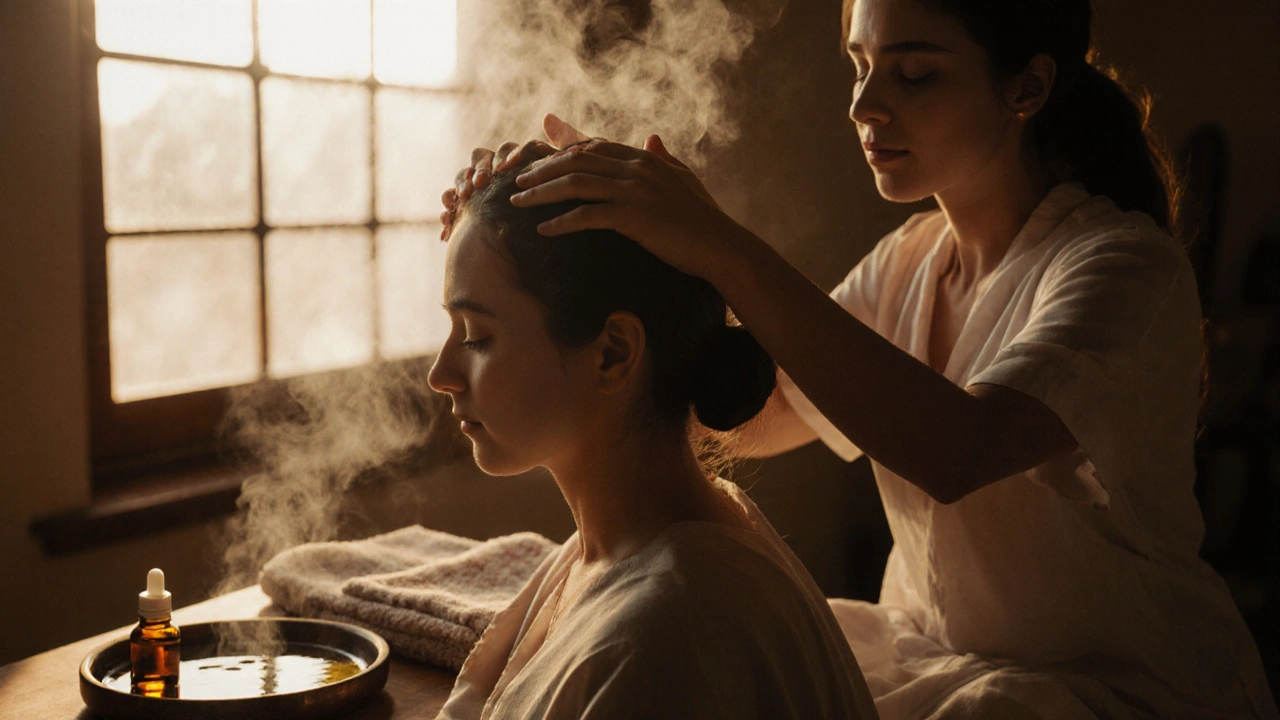
When you think of hair loss, you probably think of pills, serums, or expensive laser caps. But what if the answer is simpler - and older - than you realize? Indian head massage, practiced for thousands of years in South Asia, is being talked about more in London salons and wellness clinics. People are asking: Is Indian head massage good for hair loss? The short answer? It won’t reverse genetic balding, but it can help slow thinning, improve scalp health, and make your hair look fuller - if you do it right.
What is Indian head massage?
Indian head massage, or champi, isn’t just a scalp rub. It’s a full routine that targets the head, neck, shoulders, and upper back. Practitioners use their thumbs, fingers, and palms to apply pressure along key points - similar to acupressure - while gently pulling and stroking the scalp. Traditional versions use warm oils like coconut, sesame, or almond, which are massaged in before the technique begins.
It’s not new. In India, it’s been part of daily self-care for centuries. Women in rural villages still do it after washing their hair. Men in Ayurvedic households use it to reduce stress and improve sleep. In the UK, it’s become popular in spas and salons, especially in London, where people seek natural alternatives to chemical treatments.
How does scalp massage affect hair?
Scalp massage doesn’t grow hair from nothing. But it does create better conditions for hair to stay healthy and grow stronger. Here’s how:
- Boosts blood flow: Tight muscles and poor circulation around the scalp can starve hair follicles of oxygen and nutrients. Massage increases circulation by up to 25% in some studies, according to research from the Journal of Physical Therapy Science in 2016. More blood means more nutrients reach the follicles.
- Reduces tension: Chronic stress triggers hormonal changes that can lead to hair shedding. Indian head massage lowers cortisol levels - the body’s main stress hormone - which helps reduce telogen effluvium, a common type of temporary hair loss.
- Loosens buildup: Shampoos, conditioners, and styling products leave residue on the scalp. Massage helps clear this out, preventing clogged follicles that can weaken hair roots.
- Stimulates follicles: Gentle pulling and pressure during massage may activate dormant follicles. While it won’t bring back dead follicles, it can wake up ones that are just resting.
A 2019 study in Japan tracked 10 men who massaged their scalps for 4 minutes a day over 24 weeks. They saw a 39% increase in hair thickness. That’s not a miracle cure - but it’s more than most over-the-counter serums deliver.
Does Indian head massage stop hair loss?
No - and it’s important to be honest here. If your hair loss is caused by genetics (androgenetic alopecia), diabetes, thyroid issues, or severe nutrient deficiencies, scalp massage alone won’t fix it. You need medical treatment. Minoxidil, finasteride, or even PRP therapy are proven options for those cases.
But if your hair is thinning because of:
- High stress or poor sleep
- Scalp tension from tight ponytails or hats
- Product buildup or dryness
- Mild circulation issues
Then Indian head massage can be a powerful tool. It won’t regrow a receding hairline, but it can help you keep what you have - and make your existing hair look thicker, shinier, and healthier.
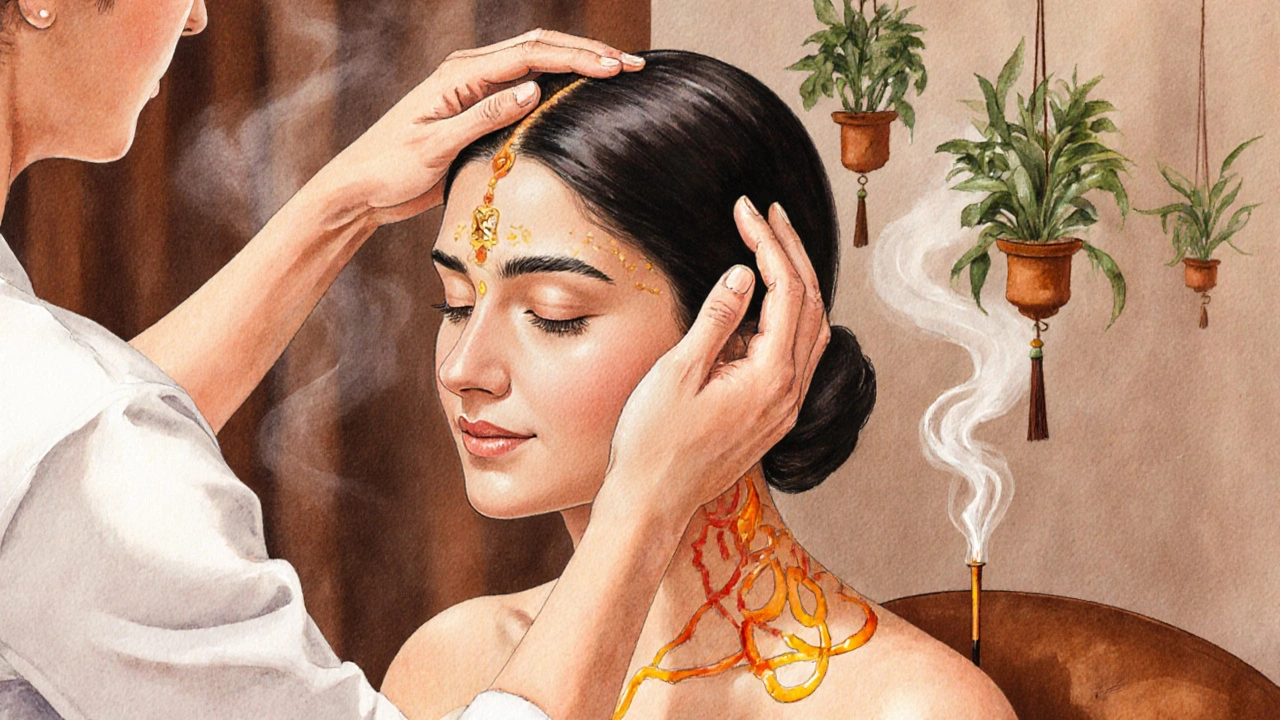
What oils work best for hair loss?
Not all oils are equal. Some can clog pores or irritate the scalp. Here’s what works based on real-world use and clinical observations:
- Coconut oil: Penetrates the hair shaft better than most oils. Reduces protein loss in hair, which helps prevent breakage. Best for dry, brittle hair.
- Sesame oil: Has natural antioxidants and anti-inflammatory properties. Used in Ayurveda for scalp health. Good for sensitive or flaky scalps.
- Almond oil: Rich in vitamin E and magnesium. Soothes irritation and improves scalp elasticity.
- Castor oil: Thick and sticky, but high in ricinoleic acid - which may help reduce inflammation around follicles. Use sparingly and mix with lighter oils.
Avoid mineral oil, silicone-based products, or heavy pomades. They sit on top of the scalp and block pores. You want oils that absorb, not coat.
How to do Indian head massage at home
You don’t need a professional to get results. Here’s a simple routine you can do in 10 minutes, three times a week:
- Warm 2 tablespoons of your chosen oil (coconut or almond work well for beginners).
- Part your hair into four sections.
- Use your fingertips - not nails - to press firmly into your scalp. Start at the forehead and move in small circles toward the crown.
- Use your thumbs to apply pressure along the hairline, from temples to ears.
- Gently pull your hair in small sections, tugging lightly from root to tip. This stimulates follicles without breaking hair.
- Massage your neck and shoulders for 2 minutes. Tension here affects blood flow to the scalp.
- Leave the oil on for at least 30 minutes (or overnight), then wash with a gentle shampoo.
Consistency matters more than intensity. Doing this regularly for 3-6 months gives the best results.
Who should avoid it?
Indian head massage is safe for most people. But skip it if you have:
- A scalp infection, psoriasis, or open sores
- Recent head or neck injury
- Severe migraines triggered by pressure
- Active acne or boils on the scalp
If you’re on blood thinners or have low platelet count, be gentle. Deep pressure isn’t advised.
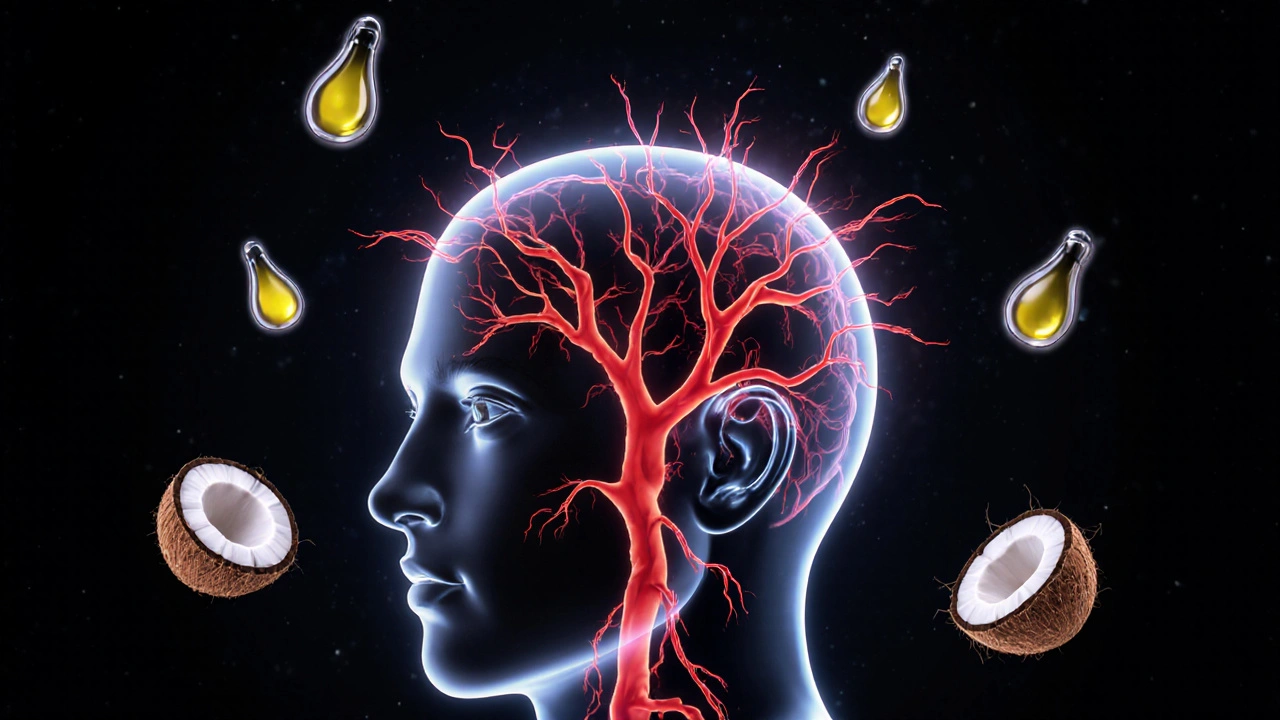
What to expect after 4-8 weeks
Realistic results aren’t dramatic. But here’s what people in Bristol and London commonly report after consistent use:
- Less hair in the shower drain
- Stronger hair that doesn’t snap when brushed
- Reduced scalp itching or flakiness
- Improved sleep and less tension
- Hair looks shinier and feels thicker
One woman in her late 30s, who’d been losing hair after childbirth, told her stylist: “I didn’t grow new hair - but the hair I had stopped falling out. Now it’s growing back thicker.” That’s the real win.
When to see a doctor
If you’re losing more than 100 hairs a day, notice bald patches, or your hairline is receding quickly, see a dermatologist. Hair loss can signal underlying health issues - from iron deficiency to thyroid disorders. A simple blood test can rule these out.
Indian head massage is a supportive practice, not a replacement for medical care. Think of it like brushing your teeth - it won’t fix a cavity, but it keeps your mouth healthy.
Final thoughts
Is Indian head massage good for hair loss? Not as a cure. But as a daily habit? Absolutely. It’s low-cost, drug-free, and has no side effects. It doesn’t promise miracles - but it delivers steady, quiet improvements over time. If you’re tired of spending money on products that don’t work, try this ancient technique. Your scalp will thank you.
Can Indian head massage regrow hair?
No, it cannot regrow hair from dead follicles. But it can improve the health of existing follicles, reduce shedding, and make hair appear thicker by improving circulation and reducing scalp tension. It works best for early-stage thinning, not advanced balding.
How often should I do Indian head massage for hair loss?
Three times a week is ideal for noticeable results. Daily massage is fine if you’re gentle, but avoid overdoing it - too much pressure can irritate the scalp. Consistency over 3-6 months is key.
Which oil is best for hair loss with Indian head massage?
Coconut oil is the most researched and widely used. It penetrates the hair shaft and reduces protein loss. Sesame oil is great for inflammation, and almond oil soothes dryness. Avoid mineral oil and silicone-heavy products.
Does Indian head massage work for women with thinning hair?
Yes. Women often experience diffuse thinning due to stress, hormones, or nutritional gaps. Indian head massage helps by reducing cortisol, improving scalp circulation, and preventing breakage. It’s especially helpful after pregnancy or during perimenopause.
Can I do Indian head massage if I have dandruff?
Only if your dandruff is mild and not caused by an active infection. Use anti-fungal oils like tea tree (in small amounts) mixed with coconut oil. Avoid massaging if your scalp is red, swollen, or oozing. See a dermatologist first.

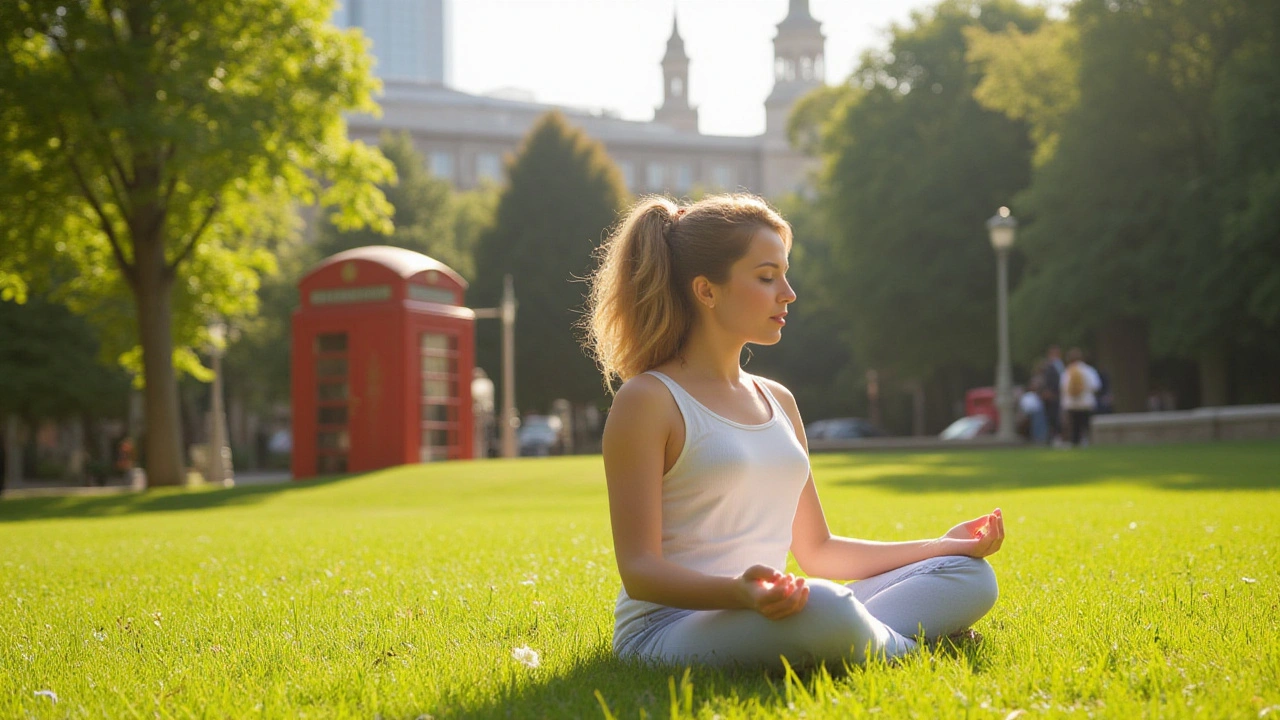

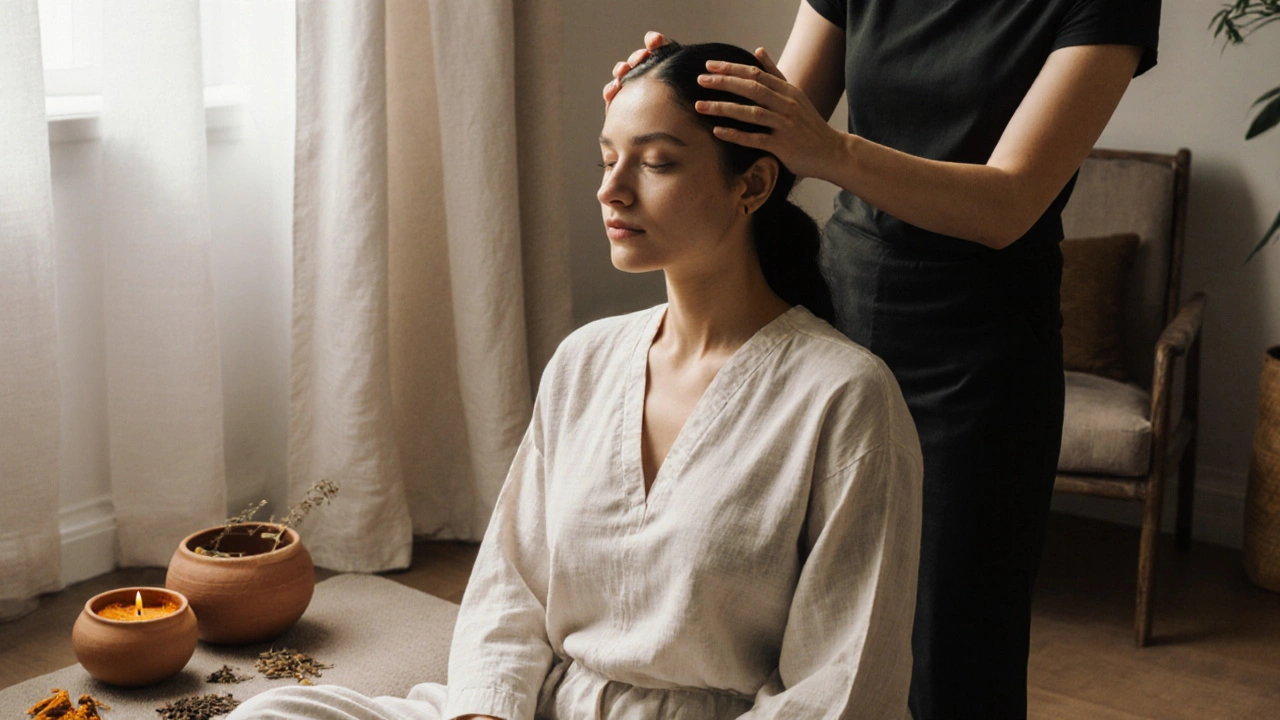
connor dalton
November 1, 2025 AT 14:18I've been doing this for six months now, just 10 minutes before bed with coconut oil. My hair isn't growing back where I lost it, but the shedding has dropped way off. I used to find clumps in the shower every day. Now? Maybe one or two. It's not magic, but it's the only thing that actually made me feel like I wasn't just wasting money on serums.
Kari Watkins
November 3, 2025 AT 08:48OMG I tried this after my stylist screamed at me for using sulfate shampoo and now my hair looks like a 90s supermodel’s 💇♀️✨ I went from ‘I need a wig’ to ‘is that my hair??’ in 8 weeks. Also my mom cried when she saw me. Not joking. I’m basically a hair oracle now.
Emily Cross
November 4, 2025 AT 19:59Let’s be real - this is just a placebo wrapped in cultural nostalgia. The 2019 Japanese study had 10 guys. That’s not science, that’s a TikTok trend with a citation. And ‘improved circulation’? So does a cold shower. You’re not reversing androgenetic alopecia with finger pressure. But hey, if it makes you feel better while you wait for your transplant… go nuts.
Amit krishna Dhawan
November 5, 2025 AT 15:58As someone born in Kerala, I can tell you - this isn’t some new wellness trend. My grandmother did this every Sunday with sesame oil and neem leaves boiled in it. We didn’t call it ‘scalp massage’ - we called it life. You don’t need studies to know what your body feels. My hair never fell out, even after 40. No pills. Just oil, pressure, and patience.
Abhishek Gowda
November 6, 2025 AT 10:32I did this for 3 months and my hair started growing like crazy!! I cried in the mirror!! I even started taking pictures of my scalp every week and posting them on Instagram!! My followers are obsessed!! I think God spoke to me through the oil!! 🙏❤️🔥
Ashok kumar
November 7, 2025 AT 01:08Let me be perfectly clear - this isn’t about hair. It’s about control. In a world of chemical scams and corporate lies, you reach for your fingers - your own hands - and you press into your scalp like you’re trying to remember who you are. You’re not massaging follicles. You’re massaging your soul. And if your hair thickens? That’s just the universe whispering back: ‘You’re still here.’
But - and this is critical - if you use almond oil instead of sesame, you’re not just doing it wrong - you’re disrespecting 5,000 years of Ayurvedic lineage. And if you skip the neck? You’re ignoring the root of tension. And if you wash it out after 10 minutes? You’re treating it like a spa gimmick - not a ritual.
Stop treating ancient wisdom like a YouTube tutorial. This isn’t self-care. It’s self-reclamation.
Amal Benkirane
November 7, 2025 AT 04:21I did this after my baby and my hair was falling out so bad. Just a little oil and gentle circles. No magic, but it helped me feel calmer. And honestly? That helped more than anything. My hair didn’t grow back fast, but it stopped falling. And I slept better. That’s enough for me.